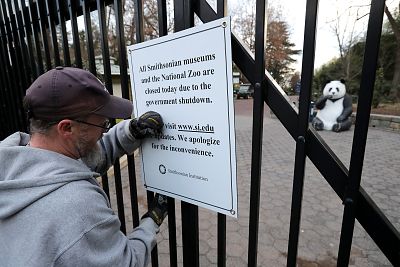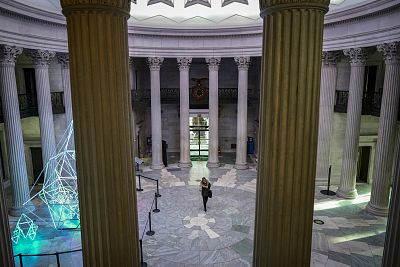Of that $11 billion hit, $3 billion is gone forever, a Congressional Budget Office report found.
Federal employees went back to work Monday after the longest shutdown in government history — but the economic effects will be felt for a long time.
A report released Monday by the nonpartisan Congressional Budget Office found that the economy took an $11 billion hit, including $3 billion that's gone forever, in the 35 days that parts of the federal government went unfunded.
"In CBO's estimation, the shutdown dampened economic activity mainly because of the loss of furloughed federal workers' contribution to GDP, the delay in federal spending on goods and services, and the reduction in aggregate demand," the report said.
And that may just be the tip of the economic iceberg.
"Underlying those effects on the overall economy are much more significant effects on individual businesses and workers. Among those who experienced the largest and most direct negative effects are federal workers who faced delayed compensation and private-sector entities that lost business. Some of those private-sector entities will never recoup that lost income," the report said.
The CBO said its estimates "do not incorporate other, more indirect negative effects of the shutdown, which are more difficult to quantify but were probably becoming more significant as it continued."
"For example, some businesses could not obtain federal permits and certifications, and others faced reduced access to loans provided by the federal government. Such factors were probably beginning to lead firms to postpone investment and hiring decisions," the report said.
The 800,000 federal workers who were either told to stay home or had to work without pay were doing their best to get their departments back up and running to full capacity.
In a statement, the Federal Aviation Administration said: "We are grateful for our many dedicated professionals and their service throughout the lapse of funding. Over the coming days and weeks, the agency will assess immediate post-shutdown needs" and "prioritize those needs."
An FAA official said among the agency's top priorities will be reopening their training facility in Oklahoma City and approving new flight routes that were supposed to have been given the green light earlier this month.
National parks, meanwhile, were re-opening on a rolling schedule. The Smithsonian's National Zoo — and presumably its beloved live panda cam — is set to reopen Tuesday morning. The Smithsonian museums are set to reopen Tuesday as well.













